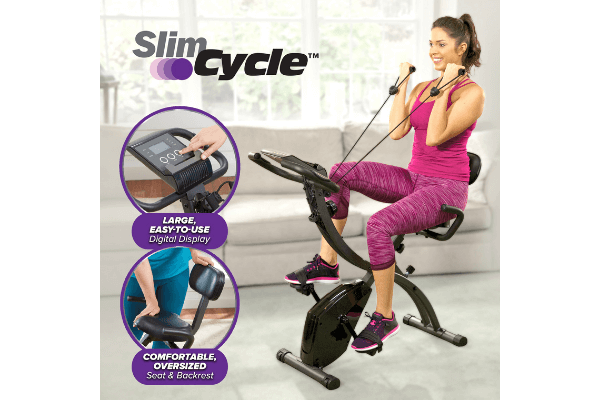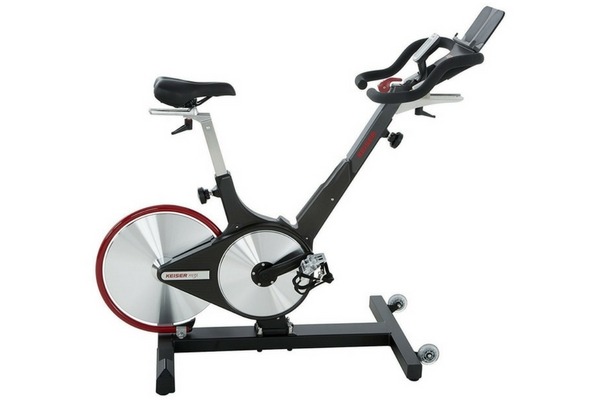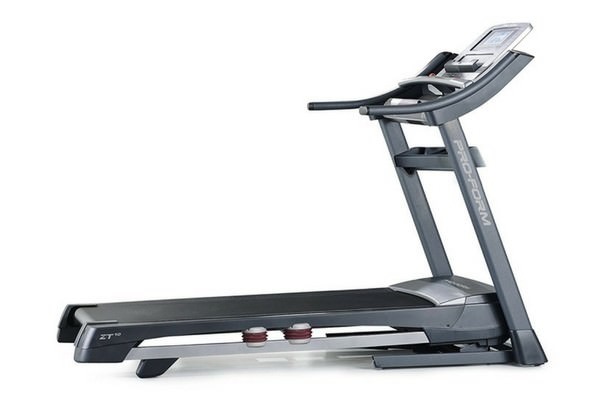Now Reading: The Ultimate Guide to Choosing the Best Recumbent Exercise Bike for Your Home Fitness
- 01
The Ultimate Guide to Choosing the Best Recumbent Exercise Bike for Your Home Fitness

The Ultimate Guide to Choosing the Best Recumbent Exercise Bike for Your Home Fitness
Introduction
1.1 What is a Recumbent Exercise Bike?
A recumbent exercise bike is a stationary fitness device designed for low-impact cardiovascular workouts. Unlike traditional upright bikes, it features a reclined seating position with a backrest for added comfort. This design reduces strain on the joints and lower back, making it ideal for all fitness levels.
Recumbent exercise bikes are prevalent in home gyms and rehabilitation centers due to their ease of use. These bikes offer a combination of cardio workout and muscle strengthening, making them a versatile piece of fitness equipment. Whether you are a seasoned athlete or a beginner looking to start your fitness journey, a recumbent bike can cater to your needs.
1.2 Benefits of Using a Recumbent Bike
Using a recumbent bike provides numerous health benefits, including:
- Improved Cardiovascular Health: Regular use enhances heart and lung function, which is crucial for overall health.
- Increased Muscle Strength: It primarily works on your lower body muscles, including the quadriceps, hamstrings, and glutes.
- Enhanced Flexibility: The gentle, repetitive motion helps increase your range of motion.
- Weight Management: Recumbent biking burns calories efficiently, aiding in weight loss and maintenance.
- Low Impact: The reclined position reduces pressure on the joints and spine, making it suitable for those with arthritis or back pain.
- Mental Health Improvement: Exercise releases endorphins, reducing stress and improving mood.
1.3 Why Choose a Recumbent Bike Over Other Exercise Equipment?
Recumbent bikes are preferred over other exercise equipment due to several key factors:
- Ergonomic Design: Their design reduces strain on your back and joints, providing a more comfortable workout experience.
- Accessibility: Suitable for a wide range of users, from beginners to seniors and those recovering from injuries.
- Versatility: They offer various resistance levels and preset programs to customize workouts according to fitness levels.
- Space-Saving: Many models are compact or foldable, making them ideal for home use.
Understanding Recumbent Exercise Bikes
2.1 Upright vs. Recumbent Bikes: Key Differences
The primary differences between upright and recumbent bikes lie in their seating positions and structure:
- Seating Position: Upright bikes have a vertical seat akin to traditional bicycles, while recumbent bikes have a reclined seat with back support.
- Comfort: Recumbent bikes offer more comfort due to their larger seats and backrests.
- Muscle Engagement: Upright bikes engage more upper body muscles, while recumbent bikes focus on the lower body.
- Strain and Impact: Upright bikes may cause more strain on the back and wrists, whereas recumbent bikes provide a lower-impact alternative.
2.2 How Recumbent Bikes Benefit Seniors
Recumbent bikes are especially beneficial for seniors due to their low-impact nature:
- Easy Accessibility: The step-through design allows easy mounting and dismounting, which is crucial for users with mobility issues.
- Joint-Friendly: The low-impact exercises are gentler on joints, reducing the risk of injury.
- Comfortable Workout: The reclined seating provides added comfort and support, allowing for longer workout sessions without discomfort.
- Improve Mobility: Regular use can help enhance joint mobility and flexibility, contributing to better overall movement.
- Cardiovascular Health: Keeping the heart active and healthy is essential for seniors, and recumbent bikes offer an effective way to achieve this.
2.3 The Mechanics of a Recumbent Cycle
Recumbent cycles use a simple mechanism involving a flywheel and pedals:
- Flywheel: This is the central component that generates resistance. It can either be mechanical or magnetic.
- Resistance: Adjustable through mechanical or magnetic means, allowing for varying levels of intensity. Magnetic resistance is preferred for its smooth and quiet operation.
- Seat and Back Support: Designed ergonomically to provide maximum comfort and support during workouts.
- Pedals: Positioned in front of the body, reducing the upward and downward stress on the knees.
Top Factors to Consider When Buying a Recumbent Exercise Bike
3.1 Comfort and Seat Design
Comfort is one of the most crucial factors:
- Seat Padding: Look for a bike with an adjustable, cushioned seat that offers ample back support.
- Seat Adjustability: The ability to adjust the seat forward and backward, as well as the backrest’s angle, enhances comfort and ergonomics.
3.2 Resistance Levels and Types
Resistance options play a significant role in the bike’s functionality:
- Magnetic Resistance: Preferred for its smooth and quiet operation, suitable for home use.
- Mechanical Resistance: More traditional, often cheaper but noisier and less smooth.
- Variable Resistance: The ability to change resistance levels is crucial for customizing workouts and accommodating different fitness levels.
3.3 Console Features and Connectivity
Modern recumbent bikes come equipped with advanced consoles that track your workout metrics:
- Digital Display: Shows essential metrics like speed, distance, time, heart rate, and calories burned.
- Preset Programs: Offers various workout programs tailored to different fitness goals.
- Connectivity: Bluetooth connectivity and compatibility with fitness apps for enhanced tracking and experience.
3.4 Weight Capacity and Stability
Ensure the bike can support your weight and has a sturdy frame for stability:
- Weight Capacity: Most models support between 250 to 350 pounds.
- Stability: Look for bikes with a wide base and sturdy construction to prevent wobbling during intense workouts.
3.5 Price Range: Budget vs. Premium Models
Recumbent bikes range from budget-friendly options to premium models with advanced features:
- Budget Recumbent Bike: Typically offers basic functionality and fewer features. Ideal for beginners or those looking for a cost-effective solution.
- Premium Models: Come with advanced features like enhanced resistance options, superior comfort, and connectivity features.
- Consideration: Determine your budget and desired features to find the best fit for your needs.
3.6 Space Considerations for Home Use
Consider the dimensions of the bike and your available space:
- Size: Measure the space where you intend to place the bike to ensure it fits comfortably.
- Portability: Some models offer folding designs or wheels for easy storage, ideal for smaller spaces.
Benefits of Using a Recumbent Exercise Bike at Home
4.1 Convenience and Accessibility
Working out at home eliminates the need for gym memberships and travel:
- Flexibility: Workout anytime from the comfort of your home.
- Privacy: Home workouts offer a greater sense of privacy and comfort.
- Cost-Effective: Save money on gym memberships and transportation.
4.2 Low-Impact Cardiovascular Workout
Recumbent bikes provide an effective cardiovascular workout:
- Joint-Friendly: The low-impact exercises are gentler on joints, ideal for users with arthritis or joint issues.
- Heart Health: Regular use enhances cardiovascular health, which is crucial for overall well-being.
- Endurance: Improve your cardiovascular endurance over time with consistent workouts.
4.3 Muscle Strengthening and Toning
Regular use of a recumbent bike helps strengthen and tone the muscles:
- Lower Body: Focuses on the quadriceps, hamstrings, glutes, and calves.
- Core Engagement: Proper form engages the core muscles, providing a mild abdominal workout.
- Functional Strength: Enhance strength needed for everyday activities.
4.4 Suitable for Rehabilitation and Physical Therapy
Recumbent bikes are frequently used in rehabilitation settings:
- Controlled Environment: Allows for a safe and controlled environment to rehabilitate from injuries.
- Adaptive Workouts: Adjust resistance and duration according to the rehabilitation plan.
- Low Risk of Injury: The supportive seat and low-impact nature reduce the risk of re-injury.
Recumbent Exercise Bike Workouts
5.1 Beginner’s Guide to Getting Started
Getting started with a recumbent bike involves a few simple steps:
- Setup: Adjust the seat and backrest for optimal comfort.
- Warm-up: Start with a 5-minute warm-up at low resistance.
- Duration: Begin with 10-15 minute sessions, gradually increasing as you build endurance.
- Resistance: Use low resistance initially, increasing as you feel comfortable.
5.2 Intermediate Workout Plans
Once you are comfortable with beginner workouts, incorporate intermediate plans:
- Interval Training: Alternate between high and low resistance to challenge your muscles.
- Consistency: Aim for consistent 30-minute sessions to build endurance.
- Variety: Include varied workout programs to keep your routine interesting.
5.3 Advanced Training Techniques
Advanced training techniques maximize fitness results:
- High-Intensity Interval Training (HIIT): Include periods of intense effort followed by short recovery times.
- Resistance Profiles: Use pre-programmed resistance profiles to simulate different terrains.
- Duration and Frequency: Aim for 45-60 minute sessions, 4-5 times a week.
5.4 Tips for Maximizing Fitness Results
Here are some tips to make the most out of your recumbent bike workouts:
- Maintain Proper Form: Ensure your back is fully supported and avoid slouching.
- Stay Hydrated: Drink water before, during, and after workouts.
- Track Progress: Use the bike’s digital console to track your metrics and set goals.
- Mix It Up: Vary your workouts to prevent plateauing and keep your muscles challenged.
- Listen to Your Body: Avoid pushing yourself too hard and allow adequate rest for recovery.
Maintenance and Care for Your Recumbent Bike
6.1 Regular Cleaning and Upkeep
Maintaining cleanliness ensures your bike remains in top condition:
- Wipe Down: Clean the seat, console, and pedals after each use to prevent sweat damage.
- Dust Removal: Regularly dust the bike, especially around moving parts.
- Inspection: Frequently inspect the bike for any loose bolts or parts.
6.2 Troubleshooting Common Issues
Addressing common issues promptly prevents major repairs:
- Resistance Problems: If resistance isn’t changing, check for magnetic or mechanical issues and consult the manual.
- Display Malfunctions: Ensure the console is properly connected and fully functional.
- Unusual Noises: Identify and fix any unusual sounds immediately to prevent further damage.
6.3 Extending the Lifespan of Your Equipment
Regular maintenance extends the lifespan of your recumbent bike:
- Lubrication: Apply lubricant to moving parts as per the manufacturer’s instructions.
- Protective Covers: Use protective covers if storing the bike for long periods.
- Professional Servicing: Schedule periodic professional servicing to keep your bike running smoothly.
Frequently Asked Questions (FAQs)
7.1 Is a Recumbent Bike Good for Weight Loss?
Yes, regular use of a recumbent bike can aid in weight loss:
- Calorie Burn: Engages large muscle groups, resulting in significant calorie expenditure.
- Consistency: Regular workouts are key to sustained weight loss.
- Balanced Diet: Combining exercise with a healthy diet enhances weight loss results.
7.2 Can Recumbent Bikes Help with Back Pain?
Yes, the supportive seat and low-impact nature of recumbent bikes can help manage and reduce back pain:
- Back Support: The ergonomic design supports the back, reducing strain.
- Low Impact: Exercises on a recumbent bike are gentle on the back and joints.
- Therapeutic Exercise: Incorporate gentle, regular workouts to strengthen back muscles and alleviate pain.
7.3 How Long Should I Exercise on a Recumbent Bike Daily?
Aim for at least 30 minutes of moderate-intensity exercise on most days:
- Beginner Level: Start with 10-15 minutes and gradually increase.
- Advanced Level: 45-60 minutes daily for more advanced users.
- Consistency: Consistent daily exercise yields the best long-term results.
7.4 Are Recumbent Bikes Suitable for All Ages?
Yes, recumbent bikes are safe and suitable for users of all ages:
- Customizable Workouts: Adjustable resistance levels cater to different fitness levels and abilities.
- Safety Features: The low-impact design reduces the risk of injury.
- Ease of Use: User-friendly and accessible for all age groups.
7.5 What is the Difference Between a Recumbent Bike and a Recumbent Cycle?
A recumbent bike is a stationary exercise machine, while a recumbent cycle refers to a bicycle designed for outdoor use with a similar seating position:
- Purpose: Recumbent bikes are for indoor exercise, whereas recumbent cycles are for outdoor biking.
- Design: Both share a reclined seating position but serve different purposes.
- Mobility: Recumbent cycles offer mobility and outdoor use, unlike stationary recumbent bikes.
7.6 How Much Should I Spend on a Good Recumbent Exercise Bike?
Quality recumbent bikes vary in price from around $200 for basic models to over $2,000 for advanced, feature-rich versions:
- Budget Range: $200-$500 for basic, functional bikes. These are often referred to as budget recumbent bikes, ideal for casual users.
- Mid-Range: $500-$1,500 for models with better features and durability. The best low-cost recumbent exercise bike can be found in this category, offering a balance of price and quality.
- High-End: $1,500 and above for advanced features and premium build quality.
7.7 Do Recumbent Bikes Provide a Full-Body Workout?
Primarily, recumbent bikes target the lower body. However, some models come with resistance bands or arm exercisers for a more comprehensive workout:
- Lower Body Focus: Engages leg muscles including quadriceps, hamstrings, and glutes.
- Additional Equipment: Some bikes include arms for upper body engagement.
- Overall Fitness: Combine recumbent biking with other exercises for a full-body workout routine.
7.8 How Do I Choose the Best Recumbent Bike for Home Use?
Consider factors like comfort, resistance levels, console features, weight capacity, and available space to select the best bike for your needs:
- Seat Comfort: Ensure the seat offers sufficient padding and support.
- Resistance Levels: Look for adjustable resistance to accommodate your fitness level.
- Digital Console: Choose a bike with a user-friendly console displaying essential metrics.
- Space and Portability: Measure your space and look for foldable designs if needed.
- Reviews and Recommendations: Check reviews to gauge user experiences and product reliability.
7.9 Are There Recumbent Bikes Specifically Designed for Seniors?
Yes, many models are designed with senior users in mind:
- Low Step-Through Design: Allows easy mounting and dismounting.
- Easy Adjustability: Features simple adjustments for various user heights and comfort levels.
- Senior-Friendly Features: Larger displays and heart rate monitors for tracking fitness levels.
7.10 What Should I Look for in Recumbent Bike Reviews?
Look for reviews that mention comfort, durability, ease of assembly, and customer support to make an informed purchase decision:
- Comfort: User feedback on seat comfort and ergonomics.
- Durability: Comments on the bike’s build quality and lifespan.
- Assembly: Insights on ease or difficulty of assembly.
- Customer Support: Reviews on the manufacturer’s customer service quality.
Conclusion
8.1 Making the Final Decision
Choosing the right recumbent bike involves considering your fitness goals, budget, and personal preferences:
- Needs Assessment: Evaluate your fitness needs and preferences.
- Feature Comparison: Compare features across models within your budget.
- Test Before Purchase: If possible, test the bike to check comfort and functionality.
8.2 Investing in Your Health and Fitness
A recumbent bike is a valuable investment in your health:
- Health Benefits: Regular use improves cardiovascular health, muscle strength, and overall well-being.
- Long-Term Commitment: It supports a long-term commitment to a healthy lifestyle.
- Cost-Effective: Over time, it can be more cost-effective than a gym membership.
8.3 Future Trends in Recumbent Exercise Bikes
Future models are expected to feature enhanced connectivity, improved comfort, and more precise performance tracking:
- Technology Integration: Expect more advanced digital displays, app connectivity, and virtual workout programs.
- Comfort Enhancements: Innovations in seat design and ergonomics for better comfort.
- Performance Tracking: More detailed performance tracking with integrated health metrics.

 Peloton Indoor Exercise Bikes
Peloton Indoor Exercise Bikes Assault AirBike Classic
Assault AirBike Classic Schwinn Fitness Airdyne Bike Series
Schwinn Fitness Airdyne Bike Series Yosuda Pro Magnetic Exercise Bike 350 lbs Weight Capacity
Yosuda Pro Magnetic Exercise Bike 350 lbs Weight Capacity Niceday Recumbent Exercise Bike
Niceday Recumbent Exercise Bike











